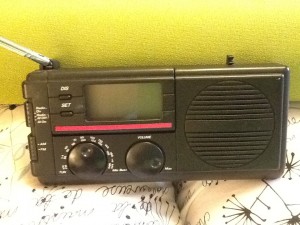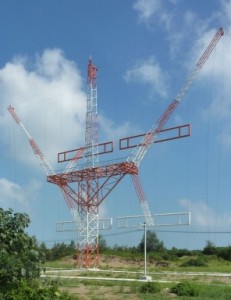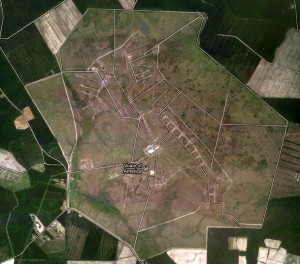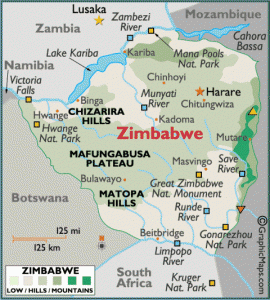 Yesterday was the first day in nearly a month that I had turned on my SDR to record broadcasts. Between my travel schedule, getting the PC fixed, and near-constant summer thunderstorms, my SWLing has been limited to portables and sporadic travel listening. It felt so great yesterday to turn on the WinRadio Excalibur and do a little band-scanning. As I skimmed across the bands, I checked in with my good friend, the Voice of Greece, on 9,420 kHz. And, as I listened, I flipped on the “record” switch.
Yesterday was the first day in nearly a month that I had turned on my SDR to record broadcasts. Between my travel schedule, getting the PC fixed, and near-constant summer thunderstorms, my SWLing has been limited to portables and sporadic travel listening. It felt so great yesterday to turn on the WinRadio Excalibur and do a little band-scanning. As I skimmed across the bands, I checked in with my good friend, the Voice of Greece, on 9,420 kHz. And, as I listened, I flipped on the “record” switch.
What I recorded was more than three hours of uninterrupted Greek music. Click hear to download the full recording, or listen via the embedded player below:
Three hours of music with no commentary (save a little dead air) is certainly not a typical format for the Voice of Greece, so I took note. If you’ve been reading The SWLing Post for long you’ll know that the Voice of Greece and its domestic broadcasting counterparts have been going through a major shake-up. In the wake of the government closure of ERT on June 11th, within hours, former ERT journalists defiantly got back on the air. Until courts ordered the immediate re-opening of the Greek national broadcaster, the Voice of Greece was, in a sense, a very powerful pirate radio broadcaster. Interestingly, since the shakeup in June, I learned that the Voice of Greece has barely been off-air.
Since I don’t speak or understand Greek, and since they’ve only made a few public statements in English, I turned to my friend and SWLing Post reader/contributor, Christos, for details. He writes:
I will try to describe…the current situation regarding the ERT issue, I hope in an objective way.
…[I]n front of the Radio House in Aghia Paraskevi suburb…all the fence[s] and part of the building [are] covered by banners. Almost every [evening], concerts take place in the yard. The participant artists express their solidarity [with] those who run the ERT since 11 of June, when the government fired 2,650 employees in order to recruit some 2000 again.
The so-called occupiers of the Radio House demonstrate signs of [fatigue] as less producers and known journalists appear in the programmes. Their programme is transmitted from medium waves 729, 1008, 1260 1404 and 1512 KHz…enough to cover the whole country during night time. I checked the short wave frequency of 9420 KHz; they [host] a different musical programme…the one you receive in [the US] [hear this above]. I think that this is a dead end for those who continue, as 3,000 people in the media business have applied for job[s] in the new ERT. The vice minister responsible…will recruit only 500 of them…
Two days ago, we had a night of tension as some protesters appeared on the mountain where the antennas are located…[P]olice arrested some of them.
You can get an idea of this incident [by] watching the following two videos:
Another source of [information about] the ERT occupiers is:
http://www.ertopen.com/news-in-4-languges/english
…[T]here have not been announcements about the future of the Voice of Greece. Think that some 10 million…Greeks live in the country, and some 10 [million] more [live] abroad.
[The pace of] Greek summer…[is] slow. People go to the beaches or to their native villages. Everybody looks exhausted as the last two days the temperature reached 39 degrees Celsius which is 102.2 degrees Fahrenheit. Today the SKAI, one of the biggest private radio stations, fired 10 journalists add[ing] to [the] 50 [previously fired]. Now they repeat older programmes and there [is] no news broadcasted.
Remaining journalists in ERT refer to [the broadcasting service] as: Hellenic Radio – The Voice of Freedom, and often announce, “You are listening to the Free Hellenic Radio.”
Once again…giving you an idea [of the political] climate here…this morning the government announced the names of 2,122 teachers – public servants from technical education [–] who lost their job[s].
I hope this will be of…interest.
Christos, we thank you so much for your insight and opinions about the state of Greek national and international broadcasting! We at The SWLing Post support freedom of press in Greece, and commiserate with those who have lost their jobs, especially in such an oppressively hot summer. Please do continue to keep us informed.
I have sincere doubts about the longevity of the Voice of Greece (or Free Hellenic Radio) on shortwave. With the serious budget cuts the new ERT must be built on, I doubt they’ll consider funding shortwave radio in Greece. I feel like it may only be a matter of time before we lose yet another shortwave broadcaster. I certainly hope I’m wrong…
In the meantime, I’ll be dedicating more hard drive space to spectrum recordings of VOG.
 (Source: VOA Radiogram)
(Source: VOA Radiogram)




